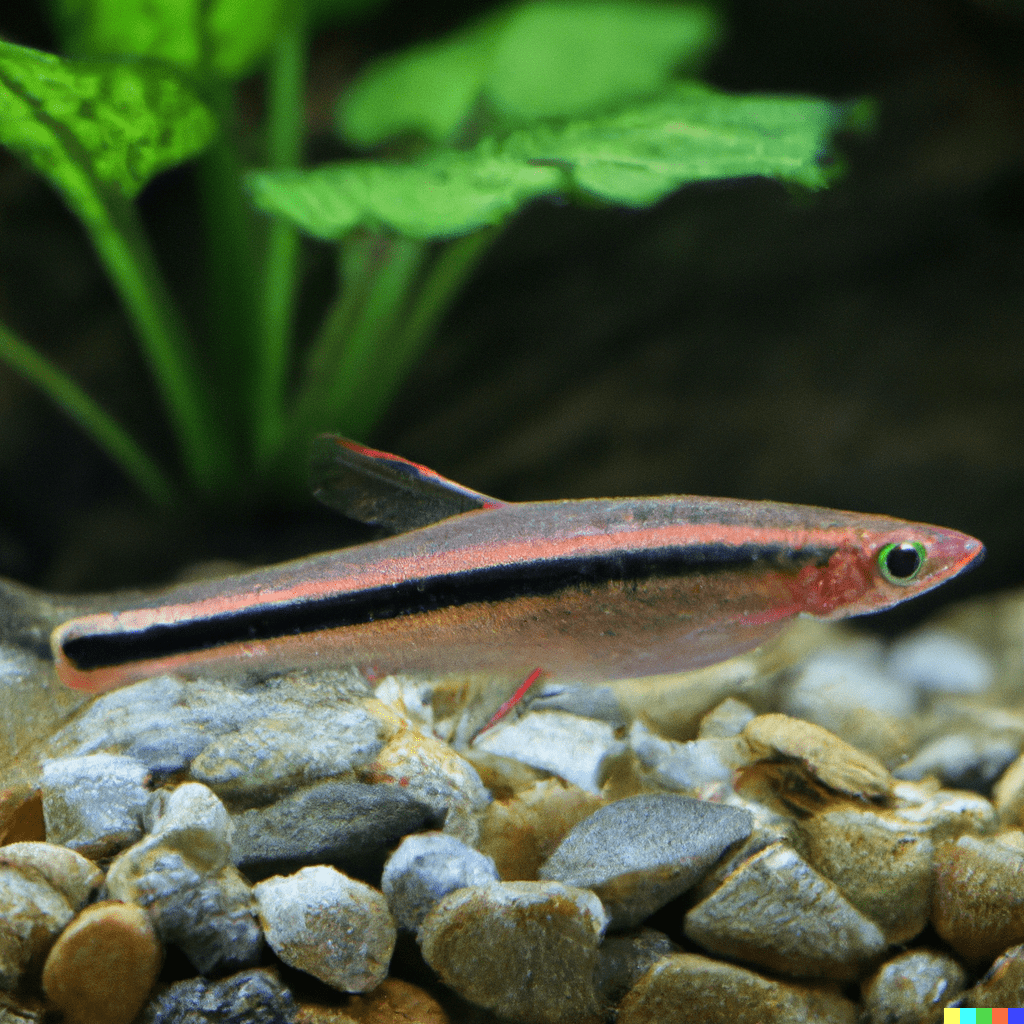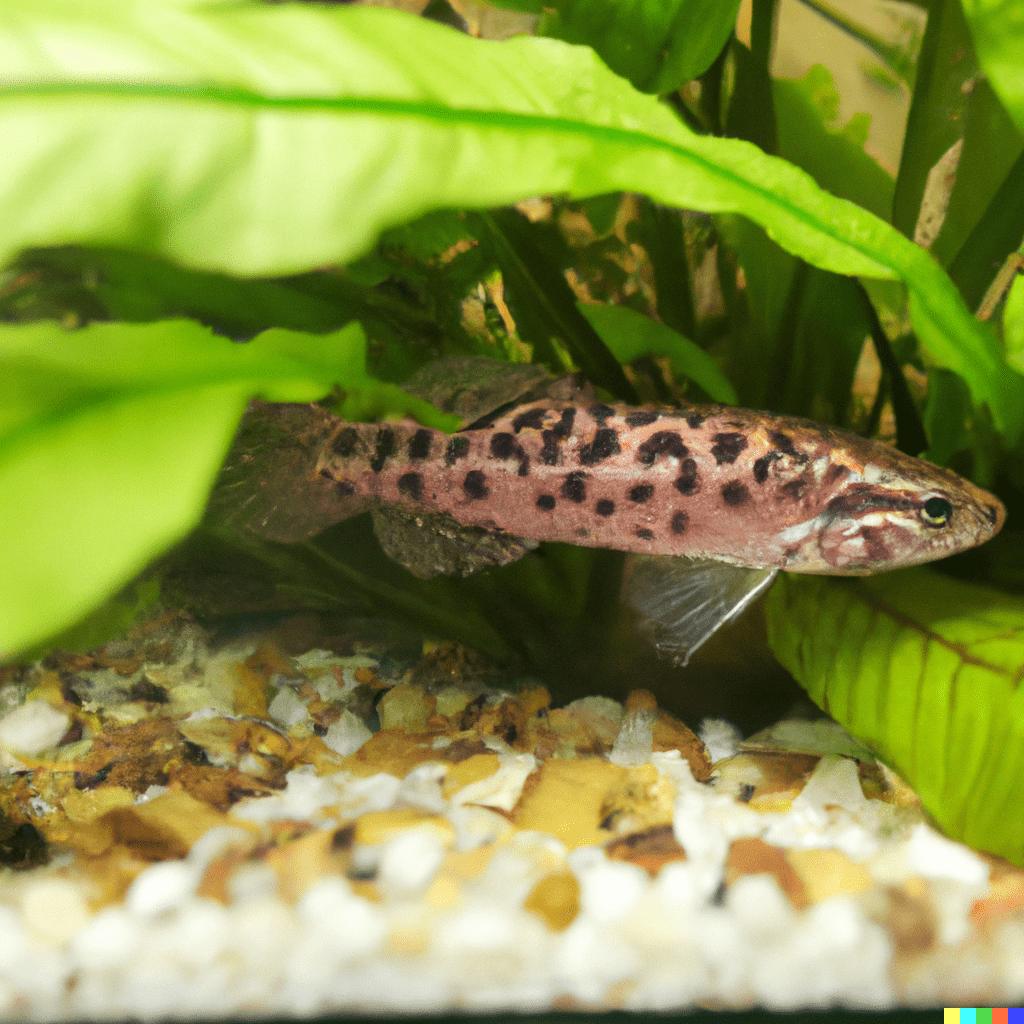Do you love colorful and lively fish but don’t have much space for a large tank? If so, you might want to consider a rosy loach as your next pet.
Rosy Loaches are extremely adorable, small and very active species of fish.
They are beginner friendly and very easy to take care of.
In this guide, I will share with you the all relevant knowledge that you will need to know to take care of your newly bought or existing Rosy Loach. From describing its appearance to the required tank size, water parameters, plants, substrate, diet and tank mates, and many other helpful tips
Background
Rosy loaches are a very peaceful species of fish and are mostly found and imported from Myanmar, Thailand, and India.
They are usually found in shallow waters, flooded fields, and ponds filled with lots of plants and vegetation
Appearance
They are very tiny, with males being about an inch long (2.5cm) while females are a little bit larger than an inch (almost 3 cm).
They come in two colors. Males are usually red and females are usually brown, but when they are still young you may not be able to see them exhibiting their natural colors. As you might need to properly feed and care for them for a while until they mature and brighten up.

Gender identification
Males are red in color with a dark lateral line in their whole body which makes them easy to spot in the tank.
Females on the other hand are less colorful and have no red color like the males; they are more brown and gray. Their body is usually large with a round belly and speckled with black spots.
Tank Setup
Recommended tank size
Since they are super active species, it would be better to keep them in at least a 10-gallon (37 liters) tank so they can have some space to freely move around.
They can also fit in small tanks but I wouldn’t recommend you do that if possible.
They are midwater species and will stay and hover in the center so a bigger space means more places for them to move and not make it look overcrowded which can cause them to become more agitated and stressed.
They also are super active which is a very cool sight to watch, unlike most other loaches that just stay at the bottom of the tank and hide.
Tank environment
They like to stay in a densely packed tank with a lot of plants such as water weeds(Elodea) and java moss.
You can also add sand, gravel substrate, stones, and wood as a way for them to get food, hide from each other and reduce sexual tension.
How many should you get?
They are peaceful community fish. They like being in groups of at least 8 or ten, but I would recommend keeping them in large numbers of more than fifteen to make them more happy and more active.
Tank Mates
They are great tank mates with microrasboras, Celestial Pearl Danio (they live in the same habitat), shrimps, small darios, scarlet badis, danios, or generally any small and tiny species like them.
Water parameters
Rosly loaches can take a versatile range of temperatures and like to stay in cooler water from 68 to 78F (22-24°C) and a soft to moderately hard water in a ph range of 6 to 8 and hardness of 90 to 270 ppm.
Diet
What do rosy loaches eat?
Rosy Loaches are omnivores and easy to feed, they will basically eat any dry food you give them as well as any fresh food such as microworms, daphnia, and many other different kinds of flakes and pellets. Just make sure to crush them into small pieces so they will be able to eat them.
Recommended feeding schedule
Depending on how mature they are, you might want to consider setting up a schedule and choosing the right nutrient for them. They love to eat so feeding them twice a day would be enough, you just need to make sure they are consuming all the food you give them and get rid of any leftovers. You can also feed them but that will depend on the size of the portions you are planning to give them. Be also aware not to overfeed them as that might flip and make them sick.
Breeding
Spawning behavior
Same as Silvertip Tetra, Rosy loaches are egg scatterers.
Males will excessively chase after the females when they have spawning behavior, so be sure to pay attention to that if you want to isolate them in a breeding tank.
But you should also note to vary the number of female and male ratio in the tank, otherwise, if your tank has fewer females than males you’ll see a lot of chasing behavior.
Hatching
The eggs will usually hatch in 24 hours. After that, you’ll need to pay attention to the eggs by removing the fish from the breeding tank.
I would also recommend breeding them in a separate breeding tank otherwise you won’t get many surviving fries at the end of the day, as most of them will be eaten and devoured.
The fry usually starts eating right after being born and the first few days are important for them so make sure they get their fill and do not go hungry or become malnourished.
Conclusion
In conclusion, the Rosy loach can be a great addition to your tank, whether you have a small or a large tank, keeping them will bring more movement and life to the tank as they are a super active species.
We’ve seen how easy is to care for and breed them, a great community fish mate with similar-sized fish and colorful and pleasing to the eye. If you are trying to have a more lively tank then don’t hesitate to get one.
If you have any tips or experience to share, feel free to leave a comment below or get in touch with us, we would love to hear more from you.
You can also share this guide on social media with your friends from the icons below.


5 thoughts on “Rosy Loach: A Beginner’s Guide to Care and Maintenance”